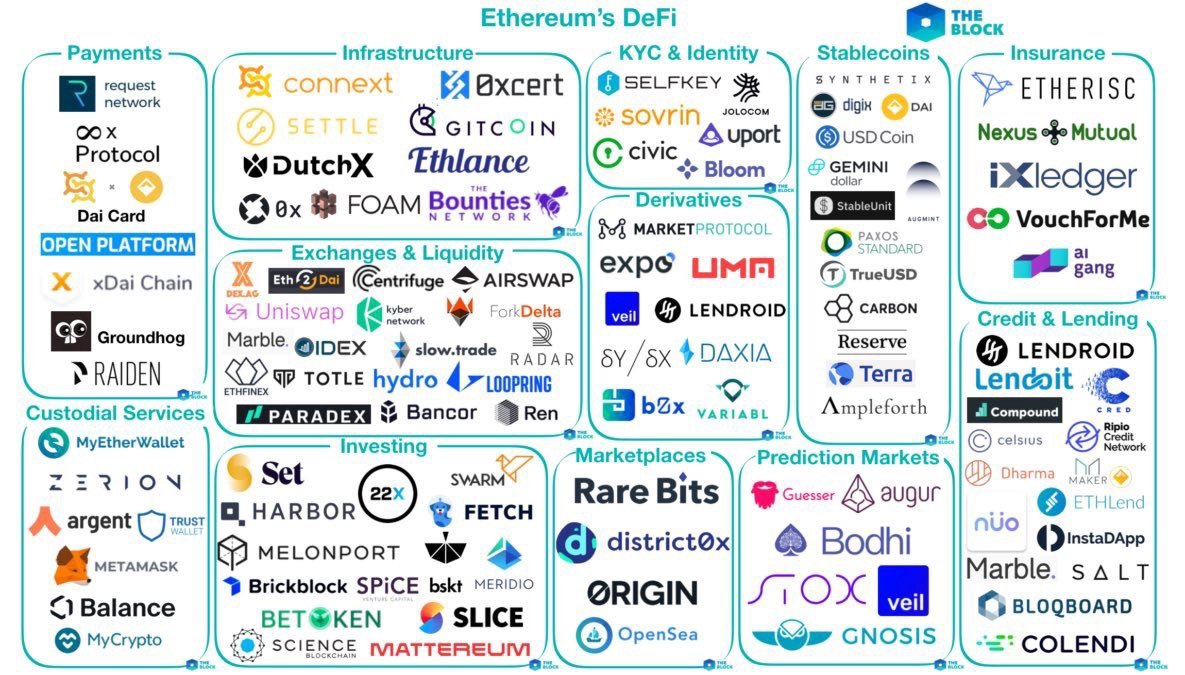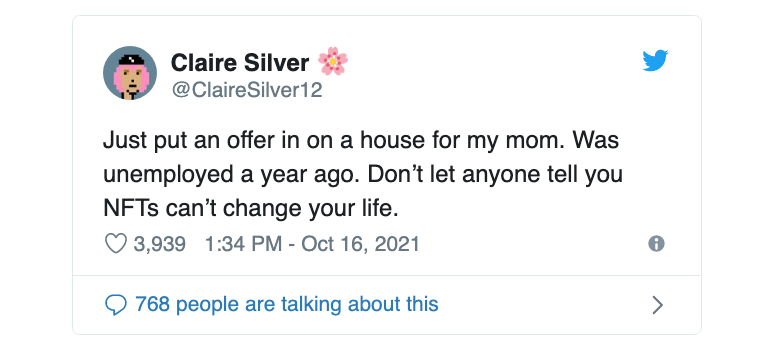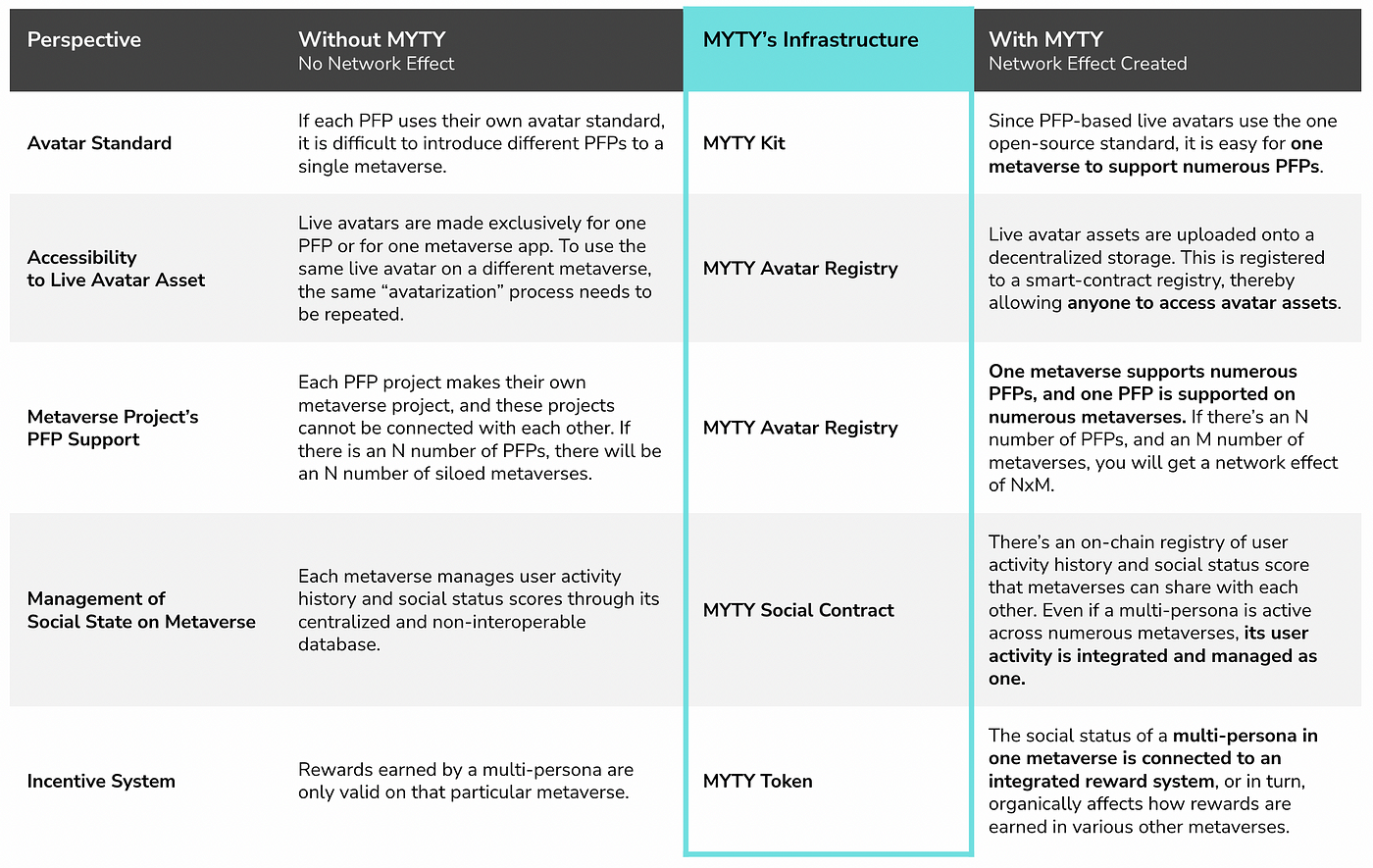How we see metaverse
Before diving into the topic of web3 social metaverse, let’s first talk about our definition of metaverse in general, as we see it. Simply put, we believe a metaverse is a virtual space where you can A. use multi-personas (beyond games) to B. conduct social activities, and C. get economic rewards as a result.
Although various companies are working hard to make their own version of metaverses, many would agree that the metaverse of our dreams is not yet fully realized nor adopted. Around 9 years ago, the developer version of Oculus Rift was released, and films like Ready Player One became blockbusters. We all began implicitly agreeing that “immersion” would be the key to the metaverse. In other words, the feeling that I am that avatar, and the feeling that I am in that virtual world.
While we do agree with this premise, we raise this fundamental question: Are high-end VR headsets, high-tech wearable devices, and high-resolution content the only way to achieve that immersion?
Decentralized module metaverse, not one centralized giant metaverse.
When people think about a metaverse, most picture a virtual reality based on a 3D virtual space where people can walk, run, and fly — a space where there’s sensory stimulation similar to that of the physical world, and where most elements of the physical world can be replaced. We see things differently. We believe that a “limited virtual reality” is the way to go, and that this is more in line with Web3 and crypto. This approach would effectively replace just a few elements of the physical reality, provide simplified sensory stimulation appropriate for the particular use case (à la pixel PFP!), and restrict possible interactions. For example, voicing your opinion through a short Tweet with your authenticated-NFT as the profile picture, or using your self-made Snapchat filter in a Zoom call to put an avatar on your face — while these cases might not ring “the grand virtual reality”, they are excellent “mini metaverses”.
Think about how DeFi grew in Web3. Right now, DeFi supports the whole array of major financial transactions including savings, loans, spot-trading, margin-trading, futures, and options. But, there is not a single unifying protocol that performs all of these functions. Each DeFi protocol works as thought it’s a module of a “parent product” called DeFi, thereby creating a powerful network effect. For instance, UniSwap’s smart contract provides billions of dollars of liquidity to DeFi protocols that require swap feature among tokens. This happens from day 1 of the protocol’s launch, even without any sort of pre-established B2B collaboration or partnership.

We believe Web3-based metaverses will grow in a similar fashion to DeFi. We expect to see a lot of Web3 social metaverses that don’t take on a comprehensive approach, but instead specialize in one particular aspect only. As a result, the PFP-avatar user will end up experiencing “the great metaverse” by going back and forth between various mini metaverses.
Immersion through socio-economic context, not advanced sensory stimulation
The PFP culture, which originated in 2017 and grew explosively in 2021, gave us a big shock. It completely did away with a core tenet of metaverse — that you need advanced sensory stimulation to achieve immersion. People started using the ultra-simple, 32x32 pixel, CrytoPunk JPG images as their Twitter profile picture. They adopted a particular CryptoPunk as their multi-persona, and really got into it.
Since Twitter is a social platform without any gaming context, these people only focused on the social aspect of it. And with the sudden growth of the NFT market, they became influencers who could seek meaningful economic profits through their multi-personas.

It’s important to point out here that sensory simulation was not the basis for any of this. Instead, it was the economic model provided by NFT technology, and the consequent “immersion through socio-economic context” that made it possible.
We soon realized that building this socio-economic context for the multi-personas would be pivotal to ushering in the metaverse era — just as important as R&D on sensory simulation technologies such as computer graphics and wearable equipments.
Back In 2021, we didn’t see many teams seizing this opportunity. So we founded a team to develop MYTY.
PFP is the gateway for the social metaverse
After “immersion”, the next key to achieving mass adoption of metaverse is the “flippening of labor productivity” of one’s real identity and that of their multi-personas. If your multi-persona’s hourly earning rate is higher than what you can make in the physical world, your multi-persona activities go beyond being a simple “hobby” or a “side job”. What if this happened to everyone around the world? The physical world will be reduced to taking on a supportive role, merely sustaining the virtual world. This “metaverse flippening” is what we anticipate when we say that metaverse is the next big thing.
Such flippening was already unfolding in the PFP world by the second quarter of 2021. A small number of influencers earned much more through their CryptoPunk multi-personas than through their “physical-world persona”, and naturally started zeroing in on the former.

At that point, we saw the potential for such scenarios to become more commonplace. From a crypto-market perspective, the growth of NFTs and PFPs seemed inevitable. Blockchain grew by making “virtualized financial status” a shared reality. If Bitcoin made Bitcoin’s own balance a shared reality, Ethereum took this further and made the balances of many more tokens a shared reality, and DeFi made various “financial positions”, not just balances, a shared reality. Ergo, it seemed reasonable to expect blockchain to make even “non-economic statuses”, such as “social statuses”, a shared reality as well.
Our outlook proved correct. The NFT and PFP markets saw a dramatic expansion over the past year, and using PFP on social media platforms was no longer something reserved just for a select few crytpo whales, but became popular among light crypto-users as well.
The need for a versatile open-source avatar standard
Avatars come in a wide variety of styles and fidelity. Simple, pixelated, 2D avatars (CryptoPunk, CrypToadz, Nouns) are still popular. But, higher-resolution 2D PFPs (BAYC, Doodles, Azuki) have now become the mainstream style. There are projects like Anata NFT using Live2D or Spine-based technologies to give movement to 2D images. 3D avatars (CloneX, Mebits) that are easy to use as live avatars, albeit with some deformation, are also seeing good market response as well. Developments on human-like avatars, however, have been almost non-existent, perhaps due to the difficulty in overcoming the uncanny valley.
In all, PFPs started out as simple JPGs at first, but are now being developed in the direction of pursuing ‘more utility’. In particular, one use case as metaverse avatars is seemingly the best utility. Naturally, we’ve seen numerous projects aimed at giving movement to PFPs but the idea of a metaverse where all of these different PFPs can interact and “hang out” with each other seems out of reach unless you have an open-source standard that is universally adopted. For example, if we limit the avatar style to pixel art, we would have to pixelate all higher-resolution PFPs, including 3D avatars. In the process, many aesthetic features of the original avatar would be lost. Simply “3Dfying” pixel art isn’t going to solve the issue either. Ultimately, we need a universal standard that will allow all PFPs to move, without influencing their original aesthetics. Such a standard should follow the Web3 context and be fully open-source and copyright-free, even for commercial use. It’ll be hard to usher in the Web3 metaverse era with a privately-owned standard.
MYTY’s Vision: On/Off-Chain Infrastructure for Web3 Social Metaverse
Project MYTY is aimed at providing an infrastructure for decentralized social metaverses, and creating a network-effect among the “mini metaverses”. In turn, MYTY helps mini metaverses take advantage of this network effect by providing various products both on-chain, and off-chain.
The following table outlines the potential hurdles to creating a network effect when there isn’t an appropriate universal infrastructure, and our solution to each.

In our upcoming posts, we will further elaborate on each of the above elements of MYTY’s infrastructure and how they will contribute to the network effect.
We are looking for teams passionate about creating an extraordinary metaverse with MYTY.
What kind of Web3 metaverses will arise in the future? This question is easy to answer if you think about the countless Web2 scenarios that haven’t yet adopted PFP live avatars. Imagine incorporating PFP live avatars into how we use Twitter Spaces, Azar, Zoom, Discord, Twitter, Facebook, VRChat, Zepetto, and so on.
We have developed a simple metaverse utility app called the MYTY Camera, to showcase an example of MYTY’s various SDKs. We hope the MYTY Camera will inspire PFP projects and metaverse developers about the social metaverse, and its limitless potential.
The number of developers believing in the potential of PFP live avatars in the web3-based metaverse is fast increasing. Do you want to support dozens of PFP live avatars from day one, and have this pool expand on its own to include all the industry’s hottest PFPs? Do you want to inter-operate with, and grow together with, the countless mini metaverses of tomorrow? If so, then contact us and be one of the first to use MYTY’s upcoming SDKs.
Channels: Website | Twitter | Discord | Gitbook
Download: MYTY Camera | MYTY Kit
Connect with us: myty@off.live